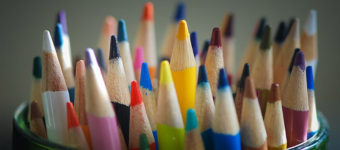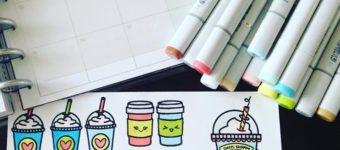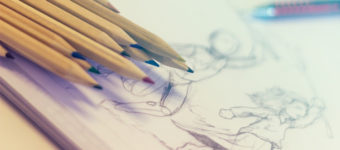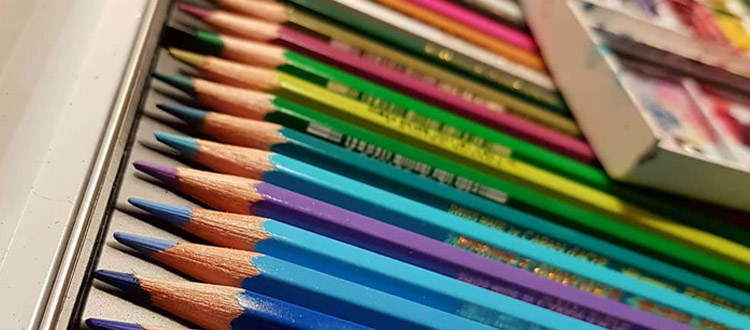
What Are Watercolor Pencils & How Are They Different from Colored Pencils?
Watercolor pencils are a medium that combines drawing with painting.
When you add water to a watercolor pencil drawing the pigment spreads over the paper to imitate the look and feel of a watercolor painting.
Working with these kinds of pencils is a great way to experiment with colors.
As you add layers to your drawings you can play around with some creative color combinations.
Then, once you add water, those colors will intensify and make your artwork come alive!
You can leave your drawings dry or use water to get a painterly feel. It’s totally up to you.
Either way watercolor pencils are an exciting way to experiment with traditional artwork.
How Do Watercolor Pencils Work?
The core of this pencil contains a water-soluble binder. When you add water to it you get that flowing look associated with watercolor paints.
Keep in mind that whenever you work with watercolor pencils, you should always use watercolor paper. Mostly if you’re planning to add water.
This is because watercolor paper is specifically made with water-based media in mind.
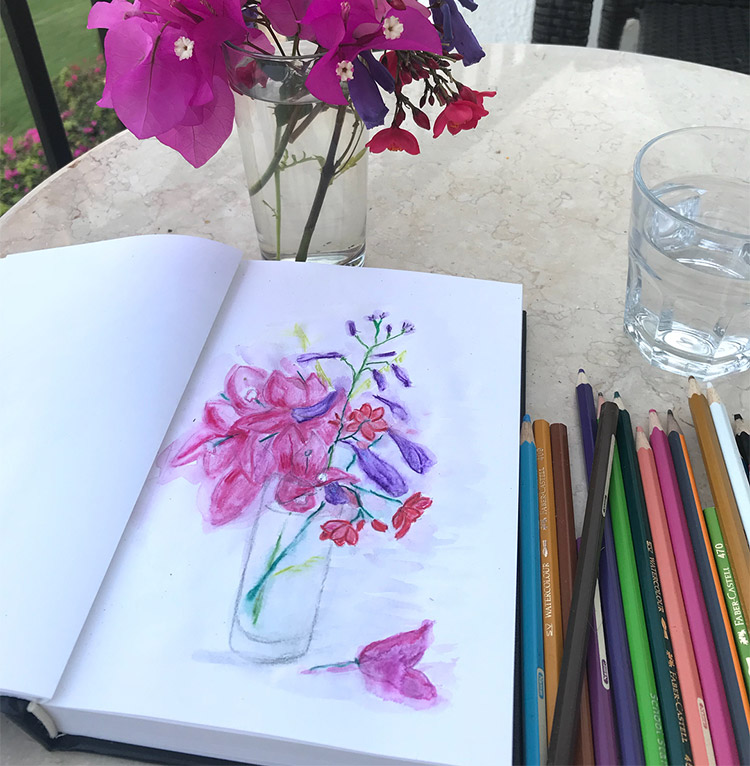
It’s durable, it doesn’t buckle under water, and you can experiment with textures too.
Regular paper just isn’t made for watercolor pencils. Or rather, it’s better if you’re only drawing dry and not adding any water.
Now there are lots of different tools you can use to add water to your drawings:
- Brushes
- Sponges
- Q-Tips
- Spray bottles
- Toothbrushes (for a spattered effect)
You can also wet your paper before you start drawing if you like that idea.
Or you can wash over parts of your work and keep other parts dry, too.
Another cool idea is to dip the tip of your pencil in water before drawing on a dry piece of paper. Endless possibilities!
But it doesn’t end there—watercolor pencils look great in mixed media too.
Watercolor pencils work well in combination with regular colored pencils, pastels, ink, or anything else that floats your boat.
This excellent YouTube video by The Virtual Instructor demonstrates watercolor pencils in action. You’ll get a great idea of how to mix colors, add value, shade your artwork, and how to apply water.
If you’d like an even more hands-on experience you can follow along with this other step-by-step tutorial of drawing a cherry with watercolor pencils.
And if you’ve never used these before you can get them in bulk just like regular pencils.
Most standard sets range between 10 and 40 watercolor pencils in a pack.

You also have a choice of artist grade or student grade quality.
If you’re just starting out, student grade pencils are fine.
However as your skills progress you’ll want to level up to artist grade pencils. They have a higher level of pigment than student grade so they’ll give you more vibrant colors with more options to work with.
Watercolor Pencils vs. Colored Pencils
Unlike the water-soluble pigment in watercolor pencils, the pigment inside of colored pencils contains a binder of wax or oil.
The waxy-oily base of colored pencils makes them easy to mix and layer colors with. But not so much with water.
Regular colored pencils can also be used for burnishing. Burnishing is the process of adding heavy layers to a colored pencil drawing to recreate the look of a painting.
However it can be difficult to add color to large areas with colored pencils.
That’s where watercolor pencils are useful. The water-soluble binder activates when you add water, intensifying and energizing your colors.
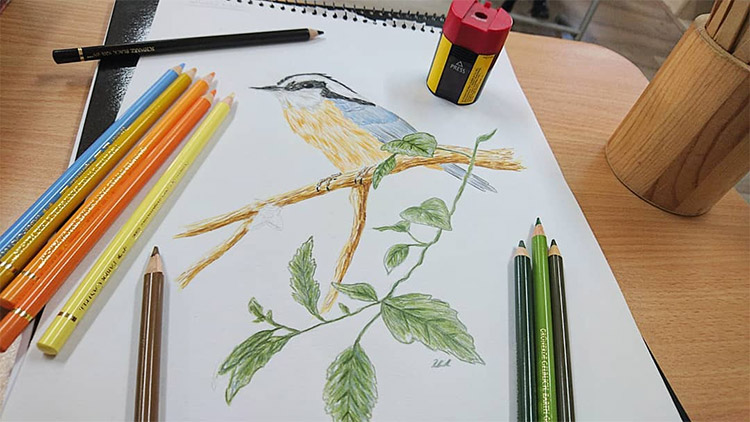
It’s also easier to lighten areas of your work with watercolor pencils. Just take a Q-tip or a sponge and soak up a little bit of your color.
Try working with both colored pencils and watercolor pencils to see which medium you prefer.
Just remember to only add regular colored pencils after you’ve put water on the drawing.
Watercolor Pencils vs. Watercolor Paints
Traditional watercolor paintings are attractive for their fluid brushstrokes and intense colors.
But some people just don’t like working with paints.
They’re a hassle to take with you if you’re leaving home to work outside. Not only do you need to carry your cases of paints and brushes, you also need water and a palette for mixing your colors.
This results in a huge mess that is difficult and time-consuming to clean up, especially in a public space.
It can also be tough to place your colors exactly where you want them which can be super annoying.
Perhaps the biggest challenge of working with watercolor paints is that they tend to dry fast. That makes it a headache when you want to add more color or do some additional blending later.
Fortunately watercolor pencils solve these problems.
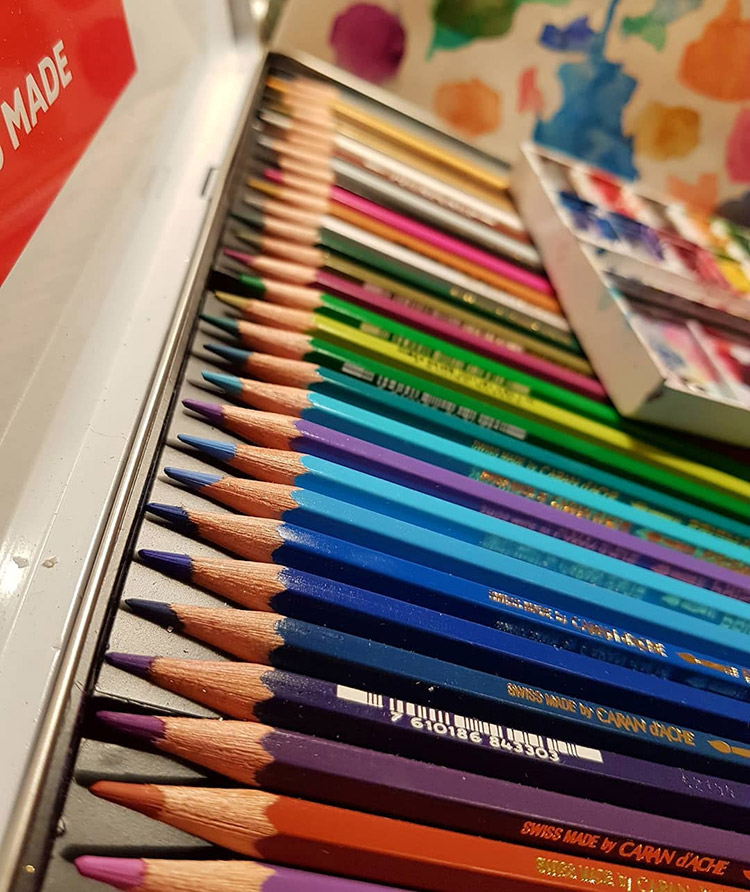
They’re far more portable than watercolor paints and much less messy.
Since you hold them just like regular pencils they give you a far better sense of control than paintbrushes.
And even better, because you don’t apply water until after you’ve laid down your pencil work, you don’t have to worry about the paper drying too fast.
And they’re pencils, so they can be sharpened!
That means if you don’t have a small enough paintbrush for your piece you can sharpen up a fine pencil point with ease. Just make sure you find a good sharpener that won’t break the pencil.
So if you admire the beauty of watercolors but don’t want the challenge of using paints, I’d say watercolor pencils are an excellent alternative.
Although just like any other artistic medium it takes time and practice to become proficient with watercolor pencils.
If you’re persistent and willing to put in the time this medium is a rewarding path to express your creativity and take your artistic skills into a unique space between traditional colored pencils and wet paints.




